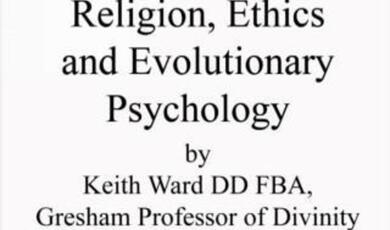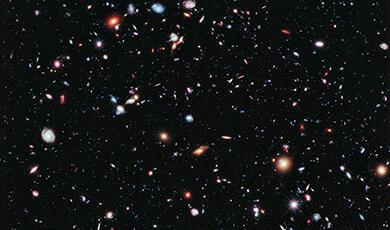Coral Reefs in a Warming World
Share
- Details
- Text
- Audio
- Downloads
- Extra Reading
Coral reefs are transforming under climate change. What is the nature of this change and the major influences upon it? The role of common management approaches is also changing. Seabird nutrient inputs through guano can benefit coral and fish growth, and have potential to help coral reefs recover from disturbances. Finally, fisheries are responding to coral reef degradation in unpredictable ways, with some finding that fish stocks are holding up well.
Download Text
Coral Reefs in a Warming World
Professor Nick Graham
28th February 2022
Coral Reefs Under Climate Change
Coral reefs are facing uncertain futures in the Anthropocene. While reef states and some functions have been relatively stable for thousands of years, the future of coral reef compositions, ecosystem functions and ecosystem services is far less predictable. This is because humans are now driving coral reef condition, diversity and even geographic locations through an escalation in pressures at multiple scales. These include fishing, nutrient inputs, and of course climate change, but also a range of underlying processes such as trade, markets, tourism, and movement of invasive species. By far the greatest threat to the future persistence of coral reefs is climate change.
From 2015-2017 the world’s coral reefs experienced the most widespread, prolonged and severe coral bleaching event on record. Coral bleaching occurs when the symbiotic relationship between corals and their symbiotic algae breaks down. The algae, which give the corals their colour and most of their energy, are ejected, and the corals cannot survive for long. Extreme warm waters associated with a very powerful El Nino event caused widespread coral bleaching and mortality of corals, particularly across the Indo-Pacific. It was estimated that the Great Barrier Reef in Australia lost about half of its corals in those 2 years. Up to 75% of the world’s coral reefs experienced severe coral bleaching.
Coral bleaching events occur during periods of extreme heat, but the anomalies that cause coral bleaching are becoming more frequent as background ocean temperatures are also gradually warming. As such, learning what coral bleaching will mean for coral reefs, how they are managed, and how people interact with them, are key research challenges. Much can be learned for a previous powerful El Nino event, in 1998, which caused severe coral bleaching in many parts of the tropics. The western Indian Ocean was one of the worst impacted locations, with roughly 45% live coral lost, and up to 90% coral mortality on some reefs. With coral loss, reef associated fish communities also declined, with specialist coral feeding fish and small bodied species declining the most.
The inner Seychelles lost ~90% of its coral cover in 1998. Long term monitoring of 21 reefs has enabled the longer-term implications of coral bleaching to be studied. About half of the reefs recovered following the bleaching event, with coral cover returning to that of pre-bleaching by 2011. Despite this recovery in coral cover, the composition of the reefs shifted in favour of fast-growing branching corals. The other half of the reefs underwent a regime shift to fleshy seaweeds. These reefs are no longer net carbonate accreting, and the strong reinforcing feedbacks have maintained seaweed dominance.
Implications of Changing Coral Reefs for Management and Fisheries
Like most ecosystems, there are winners and losers among both reef corals and reef fishes in their responses to climate change. Variation in thermal tolerance means some corals can persist while other bleach and die. Conversely, variation in reproduction and growth rate mean some corals can thrive following widespread coral loss, dominating the new space created. Similarly, fish respond to benthic change based on ecological characteristics.
These winner and loser dynamics are leading to substantially altered species compositions on coral reefs. While some are shifting to alternative regimes (e.g. seaweed), others are becoming ‘novel’ coral-dominated ecosystems. Some of the most obvious examples of novel ecosystems on reefs are on ‘tropicalising’ reefs, where tropical species, including corals and coral reef fishes, are extending their ranges into temperate reef systems. These communities become a mix of tropical and temperate species that have not interacted before. Novel compositions mean altered rates of ecological functions, and in some cases the importance of ecological functions changes. They may also influence the types or extent of ecosystem services derived from a given location, and the response of the ecosystem to common management.
One of the most common management approaches on coral reefs is protection from fishing through the establishment of marine protected areas (MPAs). A great deal of research over the past 4-5 decades has demonstrated the ecological effects of MPAs. Inside MPAs, coral cover is often higher, species richness of fish greater, and the biomass of fish is substantially higher, driven mostly by higher trophic level fish families. Meta-analyses of many studies have confirmed these patterns. The MPAs of the inner Seychelles were performing in this way in 1994, prior to the 1998 bleaching event. However, following the bleaching event, the role of the MPAs changed. The influence on coral cover was lost, and the effect on fish species richness waned through time. The influence on fish biomass was still very strong, however the groups of fish that were benefitting from protection had completely changed. Most of the benefit from protection was now seen for lower trophic level algal feeding fish.
Coral reef associated fisheries provide important livelihoods and food security to millions across the tropics. A major concern and expectation was that coral bleaching and associated reef changes would lead to a collapse of reef fisheries. Assessing reef fisheries landings data in Seychelles through the 1998 bleaching event and the 20 years that followed, showed that, contrary to fears, the catch from the fishery actually increased. This was driven largely by algal feeding fish, that had increased in abundance following coral bleaching, and some of which have very fast life histories. The nutrients in fish, for example iron, zinc and Omega-3, are key to food security. Following coral bleaching, the nutrients from fisheries may change due to changes in the types of fish being caught, or because the energy pathways that accumulate the nutrients in the fish tissue have altered. Studying fish tissue and long-term data sets in Seychelles, fish tissue was shown to be enriched in iron and zinc in fish associated with algal dominated reefs. Through time the nutrients available from reef fisheries remained stable or increased substantially for some nutrients.
The Role of Seabird Nutrient Subsidies
Three of the key actions to enable a future for coral-dominated reefs are: keep warming below 1.5 degrees; manage coral reef fisheries to maintain ecological functions; and improve water quality. Water quality refers to the nutrients and sediments in waters surrounding coral reefs. Land based run-off from urban areas and agriculture can increase sediment loads and nutrient levels, stressing corals. However, not all nutrient inputs are bad for reefs. Human derived nutrients are high in nitrogen, but low in phosphorus, which stresses corals, causing them to grow slower and bleach more easily. However, if nutrients are rich in both phosphorus and nitrogen, corals can grow faster and be more robust to bleaching. One source of a balanced nutrient input is seabird guano.
The role of seabird nutrient inputs was assessed by studying islands with and without introduced rats. Islands without rats have >750 times higher seabird densities. Based on their defecation rates, this translated to roughly 250 times more nitrogen being deposited onto the islands with no rats. The seabirds are feeding out in the open ocean and returning to the islands to roost and breed. They are effectively fertilizing the islands in the process, but what about the nearshore waters, where fringing coral reefs surround the islands
Using stable isotopes of nitrogen, to detect the signal of seabird nutrients, the influence of the seabird guano was studied. Greater nitrogen signatures were detected in soil and new growth leaf samples on the islands with no rats. These higher signals were also apparent in algal and filter feeding sponge samples on the reef flat, and even in algal and algal-feeding fish muscle on the reef crest, some 250m from shore. Fish have ear bones, called otoliths, which lay down annual grown bands, much like a tree. By counting these rings and measuring the length of the fish, the growth rate of fish populations can be determined. Fish living adjacent to islands with seabirds grow faster than fish next to islands with rats and are larger for a given age. Surveys of fish assemblages around the islands showed that fish biomass, or the number of fish, was nearly 50% higher on the reefs surrounding islands with birds. Further, the rates of two important ecological functions were between three and four times faster.
The reefs surrounding both islands with rats and those with seabirds bleached in 2016. While the extent of coral loss was similar between the two types of reefs, the response of the reef community following the coral loss was quite different. On the reefs adjacent to islands with seabirds, the available space quickly became dominated by calcifying algae, which can aid coral recovery processes. Conversely, on the reefs adjacent to islands with rats, the space was bare. Transplant experiments, moving corals between coral reef lagoons adjacent to islands with seabirds or rats, have demonstrated that corals can grow four times faster when adjacent to islands with seabirds. Collectively, these findings suggest that eradicating rats to enable seabird populations to return to islands, could be an important intervention to enhance the productivity, functioning and resilience of coral reefs.
© Professor Nick Graham 2022
References and Further Reading
Robinson JPW, Maire E, Bodin N, Hempson TN, Graham NAJ, Wilson SK, MacNeil MA, Hicks CC (2022) Climate-induced increases in micronutrient availability for coral reef fisheries. One Earth 5: 98-108
Graham NAJ, Robinson JPW, Smith SE, Govinden R, Gendron G, Wilson SK (2020) Changing role of coral reef marine reserves in a warming climate. Nature Communications 11: 2000
Graham NAJ, Wilson SK, Carr P, Hoey AS, Jennings S, MacNeil MA (2018) Seabirds enhance coral reef productivity and functioning in the absence of invasive rats. Nature 559: 250-253
Hughes TP, Anderson KD, Connolly SR, Heron SF, Kerry JT, Lough JM, Baird AH, Baum JK, Berumen ML, Bridge TC, Claar DC, Eakin CM, Gilmour JP, Graham NAJ, Harrison H, Hobbs J-PA, Hoey AS, Hoogenboom M, Lowe RJ, McCulloch MT, Pandolfi JM, Pratchett M, Schoepf V, Torda G, Wilson SK (2018) Spatial and temporal patterns of mass bleaching of corals in the Anthropocene. Science 359: 80-83
Graham NAJ, Jennings S, MacNeil MA, Mouillot D, Wilson SK (2015) Predicting climate-driven regime shifts versus rebound potential in coral reefs. Nature 518: 94-97
References and Further Reading
Robinson JPW, Maire E, Bodin N, Hempson TN, Graham NAJ, Wilson SK, MacNeil MA, Hicks CC (2022) Climate-induced increases in micronutrient availability for coral reef fisheries. One Earth 5: 98-108
Graham NAJ, Robinson JPW, Smith SE, Govinden R, Gendron G, Wilson SK (2020) Changing role of coral reef marine reserves in a warming climate. Nature Communications 11: 2000
Graham NAJ, Wilson SK, Carr P, Hoey AS, Jennings S, MacNeil MA (2018) Seabirds enhance coral reef productivity and functioning in the absence of invasive rats. Nature 559: 250-253
Hughes TP, Anderson KD, Connolly SR, Heron SF, Kerry JT, Lough JM, Baird AH, Baum JK, Berumen ML, Bridge TC, Claar DC, Eakin CM, Gilmour JP, Graham NAJ, Harrison H, Hobbs J-PA, Hoey AS, Hoogenboom M, Lowe RJ, McCulloch MT, Pandolfi JM, Pratchett M, Schoepf V, Torda G, Wilson SK (2018) Spatial and temporal patterns of mass bleaching of corals in the Anthropocene. Science 359: 80-83
Graham NAJ, Jennings S, MacNeil MA, Mouillot D, Wilson SK (2015) Predicting climate-driven regime shifts versus rebound potential in coral reefs. Nature 518: 94-97
This event was on Mon, 28 Feb 2022
Support Gresham
Gresham College has offered an outstanding education to the public free of charge for over 400 years. Today, Gresham College plays an important role in fostering a love of learning and a greater understanding of ourselves and the world around us. Your donation will help to widen our reach and to broaden our audience, allowing more people to benefit from a high-quality education from some of the brightest minds.


 Login
Login







